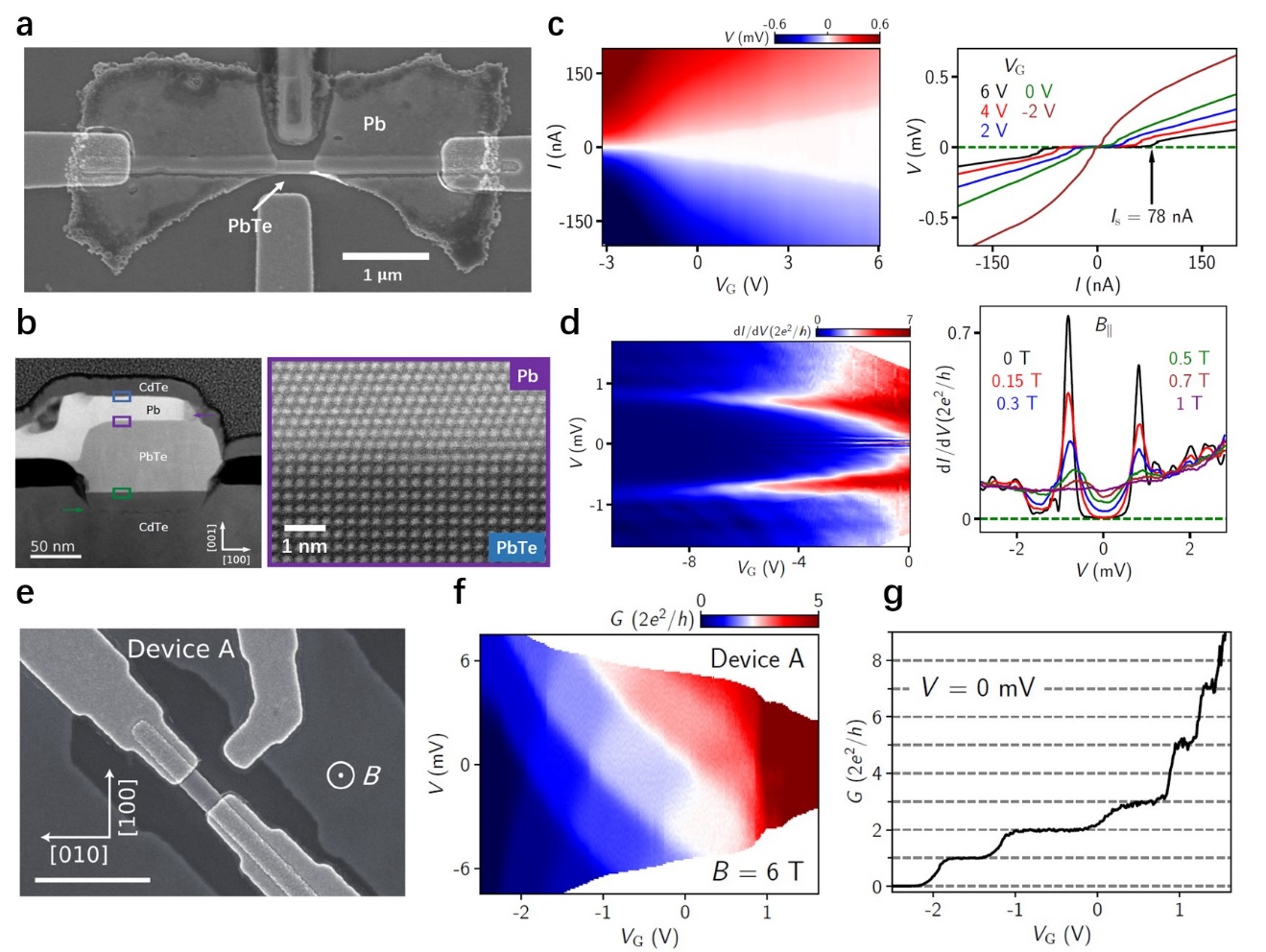Semiconductor-superconductor hybrid nanowires are one of the major platforms for the realization of Majorana zero modes and topological quantum computations. After more than a decade of extensive studies on InAs and InSb, the field faces great challenge from the device disorder. To solve this issue, PbTe nanowires, a new material platform, have recently been proposed by the team of topological quantum device, led by Prof. Ke He and Prof. Hao Zhang. They have demonstrated the epitaxial growth of these wires (PRMaterials 6, 034205 (2022)), phase-coherent transport in PbTe nanowire loops (PRB 105, L241112 (2022)), and numerical studies on PbTe for Majoranas (PRB 105, 085424 (2022)). Here, the team has further optimized the epitaxial growth, improved the device quality and realized the superconducting proximity effect in PbTe-Pb nanowires and ballistic transport at non-zero magnetic fields in PbTe nanowires.
Panel (a) is an image of the PbTe-Pb hybrid nanowire Josephson junction device. The superconductor Pb was epitaxially grown on the PbTe nanowire (panel b). The transport reveals a gate-tunable supercurrent (panel (c)) in the open regime and a hard superconducting gap (panel (d)) in the tunneling regime. These two signatures are the hallmark of the superconducting proximity effect. The work, entitled “Proximity effect in PbTe-Pb hybrid nanowire Josephson junctions”, is published in Physical Review Materials.
Another PbTe nanowire device without the superconductor Pb is shown in panel (e). With a perpendicular magnetic field of 6 T, quantized conductance at multiples of 2e2/h can be revealed, see panel f and g. Bias scans of the conductance plateaus show diamond-like shapes, indicating the ballistic transport nature of the one-dimensional electron systems. This work, entitled “Conductance quantization in PbTe nanowires”, is published in Physical Review B.
The two works above demonstrate the two necessary ingredients required for Majoranas. The first authors are graduate students of the Physics Department: Zitong Zhang, Wenyu Song, Yichun Gao, and Yuhao Wang. Corresponding authors are Prof. Ke He and Prof. Hao Zhang.

These two works are supported by National Natural Science Foundation of China, Ministry of Science and Technology of China, Tsinghua University Initiative Scientific Research Program, Beijing Municipal Science and Technology Commission, Hefei National Laboratory, and the Innovation Program for Quantum Science and Technology.
Paper Links:
https://link.aps.org/doi/10.1103/PhysRevMaterials.7.086201
https://link.aps.org/doi/10.1103/PhysRevB.108.045426